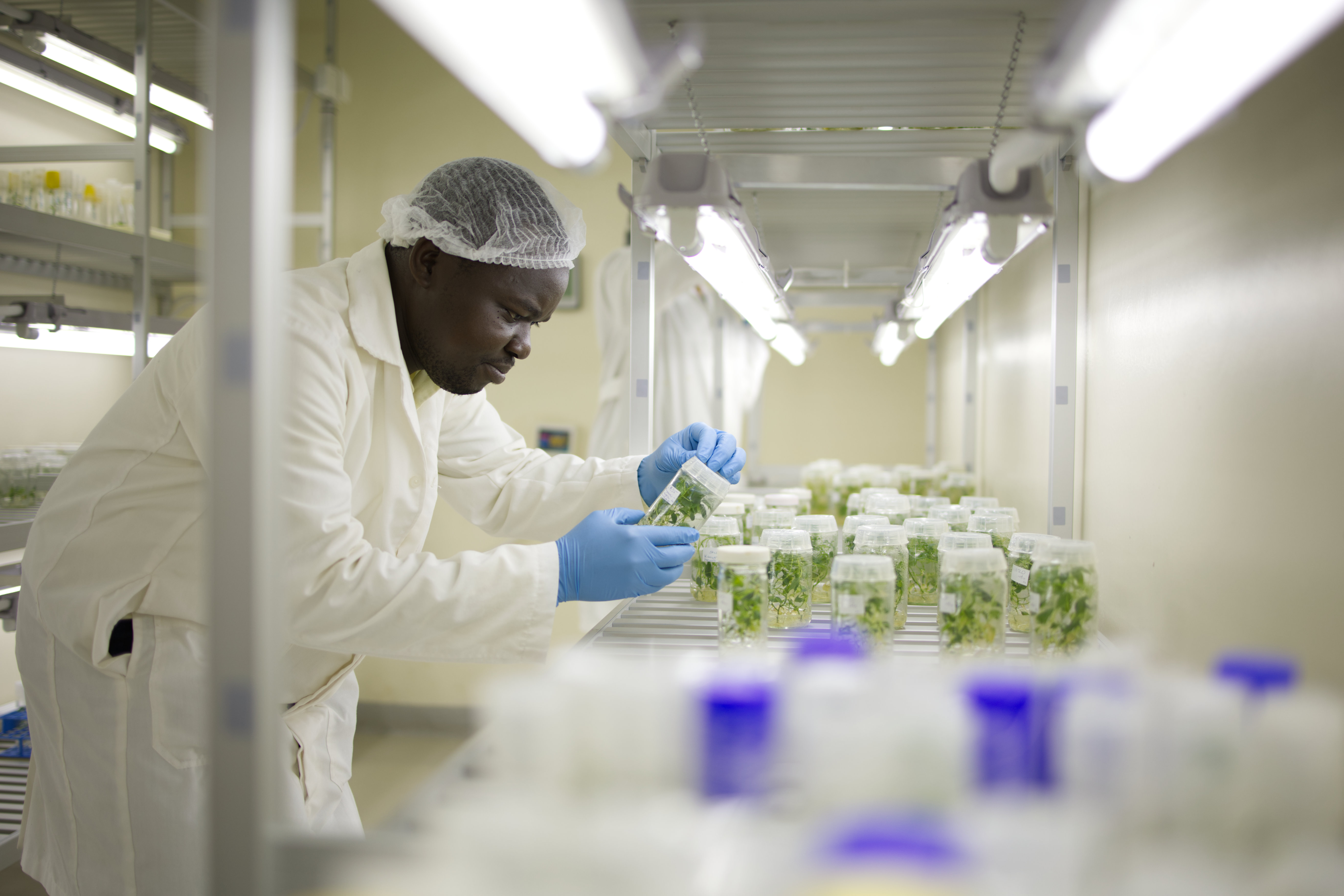
CGIAR collaborates daily across our global network of research Centers. Together, we're developing the crop varieties that our world urgently needs, ensuring affordable and nutritional diets, improved livelihoods, and enhanced social equity.
As we evolve into a cohesive entity known as One CGIAR, we need to adopt the same ways of working. This is why CGIAR's Genetic Innovation Action Area (GI) is at the forefront of formalizing crop breeding processes within the network.
We do this to ensure that methods, metrics, and collaborative opportunities are harmonized across all Centers. By embracing cross-functional collaboration, sharing knowledge, documenting insights, identifying capacity development needs, and adopting optimal practices, we're creating an inclusive and dynamic environment where learning from one another is key. Ultimately, we save time, efforts and money.
Our approach to process management brings together experts from diverse crops and Centers, uniting them under the banner of Process Teams which form a global community of practice. In May 2023, the 1st All Process Team webinar shed light on the reasons behind formalizing and harmonizing processes. This ensures Continuous Improvement of our breeding activities.
The approach is coordinated by Breeding Research Services (which oversees the Breeding Resources Initiative) which hosts the methodology and governance platform on which the Process Teams operate. Four distinct Process Teams were launched at the end of 2022 and have come a long way on the journey towards harmonization and cross-center knowledge sharing. These are: Product Development, Trailing & Nursery, Lab Services, and Breeding Analytics.
Mapping processes through collaborative review
The GI Process Management Team (PMT), which assembles the Process Owners who lead each Process Team, recently endorsed the high-level descriptions of GI’s areas of work. This means that within those Process Teams, we agreed on harmonized descriptions of groups of processes, or Process Groups, the meta-level above single-process descriptions. A Process Group is a level in the process hierarchy i.e, not a group of people but an essential step of the process management mapping, grouping processes.
The descriptions of these Process Groups were meticulously crafted by the Process Teams with representatives from many crops and Centers, using the SixSigma “SIPOC” methodology adopting a LEAN management approach.
SIPOC, an acronym for Suppliers, Inputs, Process, Outputs, and Customers, serves as a tool for mapping organizational processes within groups of processes, offering a comprehensive view of how different facets connect. Information from these SIPOCS delves into more detailed aspects than the Genetic Innovations Breeding Process Model (BPM), previously approved by GI PMT.
This mapping exercise aims to illuminate the interdependencies, interactions, and handovers between processes, enabling a clearer understanding of responsibilities and linkages. Ultimately, this exercise contributes to guiding organizations towards more efficient and optimized operations, to deliver faster, better and at lower cost.
The SIPOCs for the defined Process Groups of the three Process Teams are the following:
-
Product Development Process Team (PDPT);
- Trailing & Nursery Process Team (TNPT);
-
Lab Service Process Team (LSPT).
Shaping the future of process improvement and alignment
The review and approval of these Process Groups reflects GI Process Teams' commitment to continuous improvement from a well-defined baseline. The methodologies we use are proven approaches, tested and improved by the industry.
With interconnected processes and teams, we aim to maximize value for CGIAR through enhanced operational efficiency, transparency, and best practice sharing across diverse crops and Centers. This gradual transformation of our work culture elevates product and data quality, and excellence in execution, ultimately improving to our overall effectiveness.
Resources
-
SIPOCs of the three Process Groups:
-
Product Development Process Team (PDPT);
- Trailing & Nursery Process Team (TNPT);
-
Lab Service Process Team (LSPT)
-----
We would like to thank all funders who support CGIAR research through their contributions to the CGIAR Trust Fund. And thank you to the supporters and partners of CGIAR Excellence in Breeding, particularly the funding from Bill and Melinda Gates Foundation. Main image photo credit: Jjumba Martin, EiB/CGIAR.